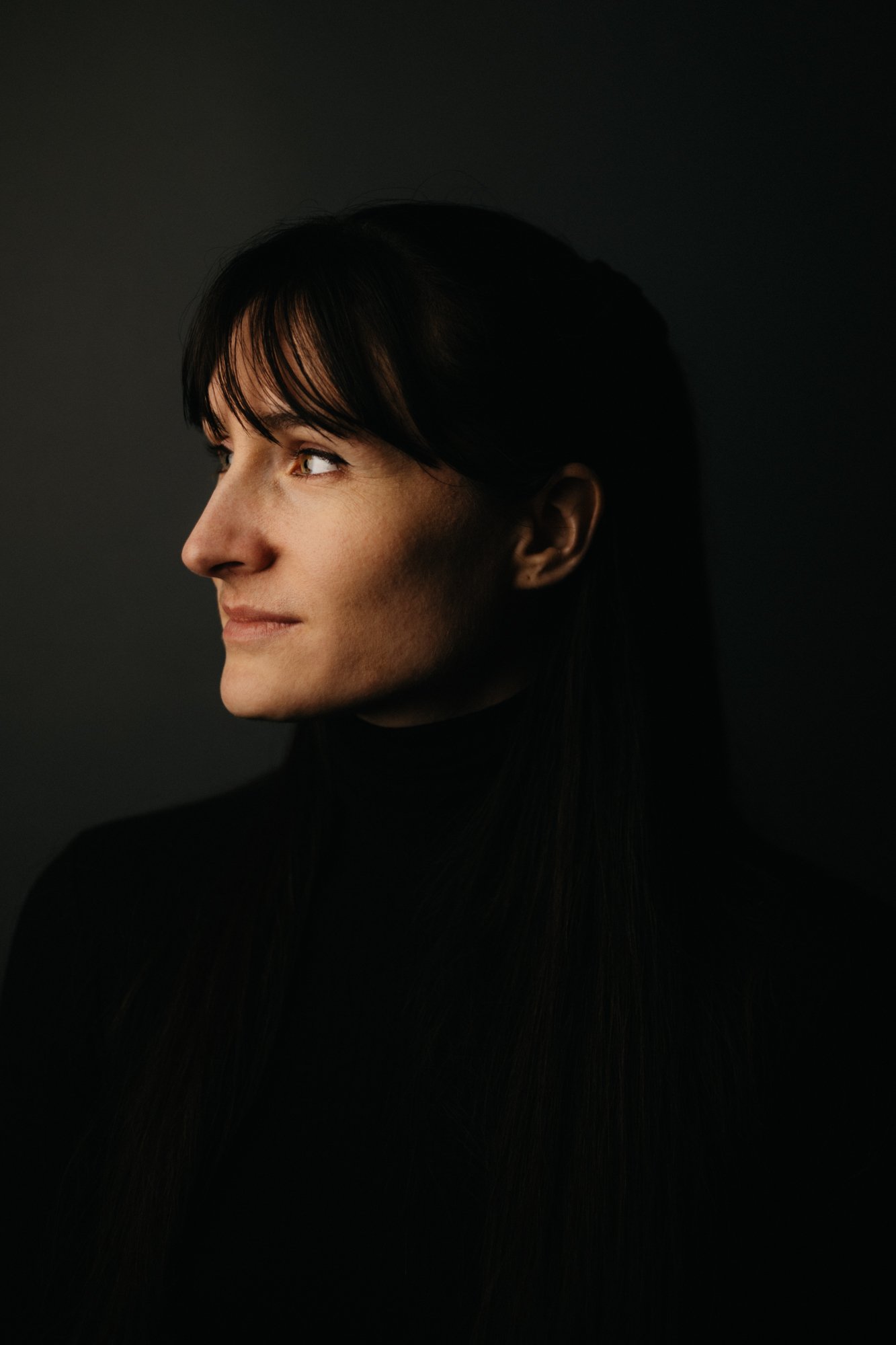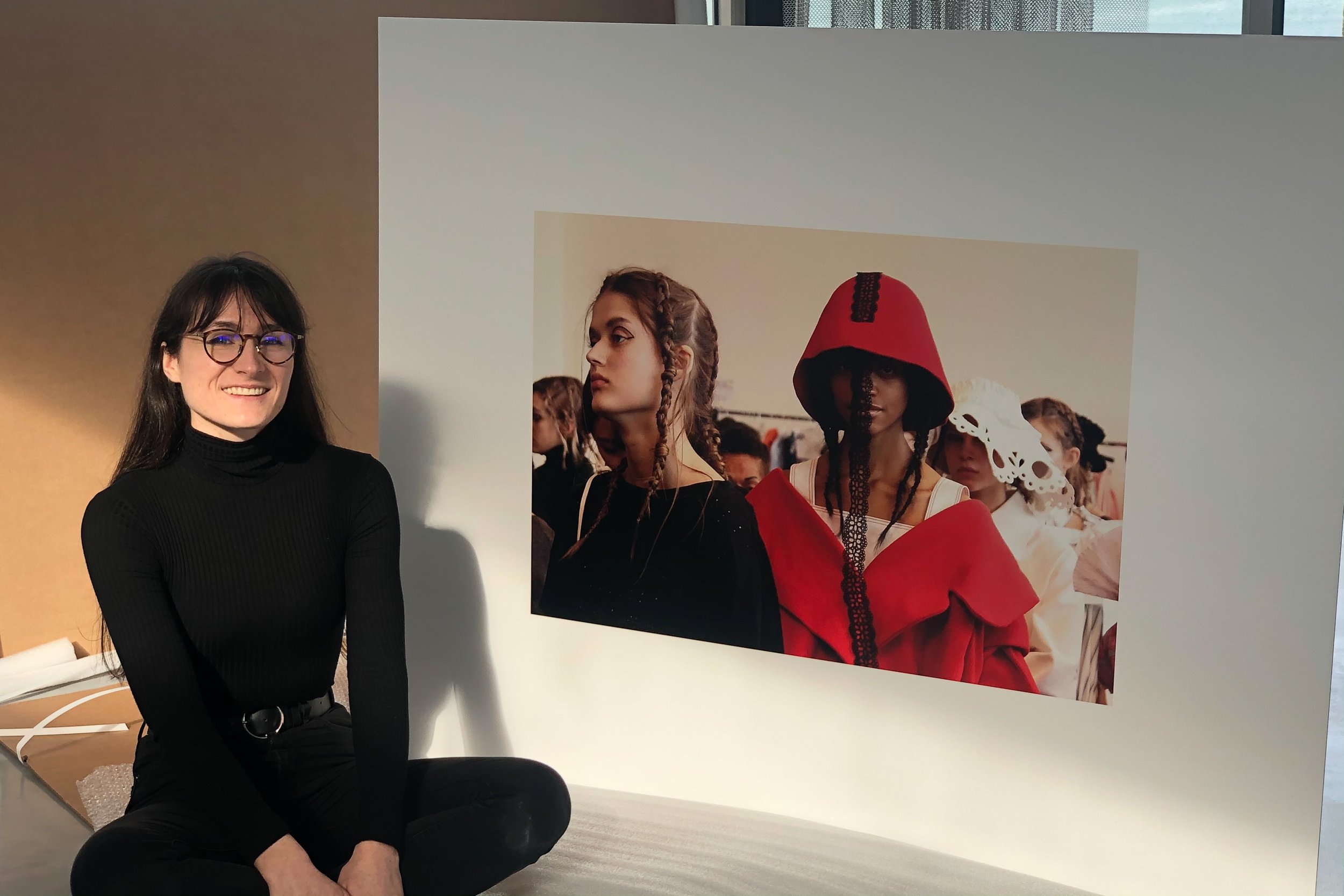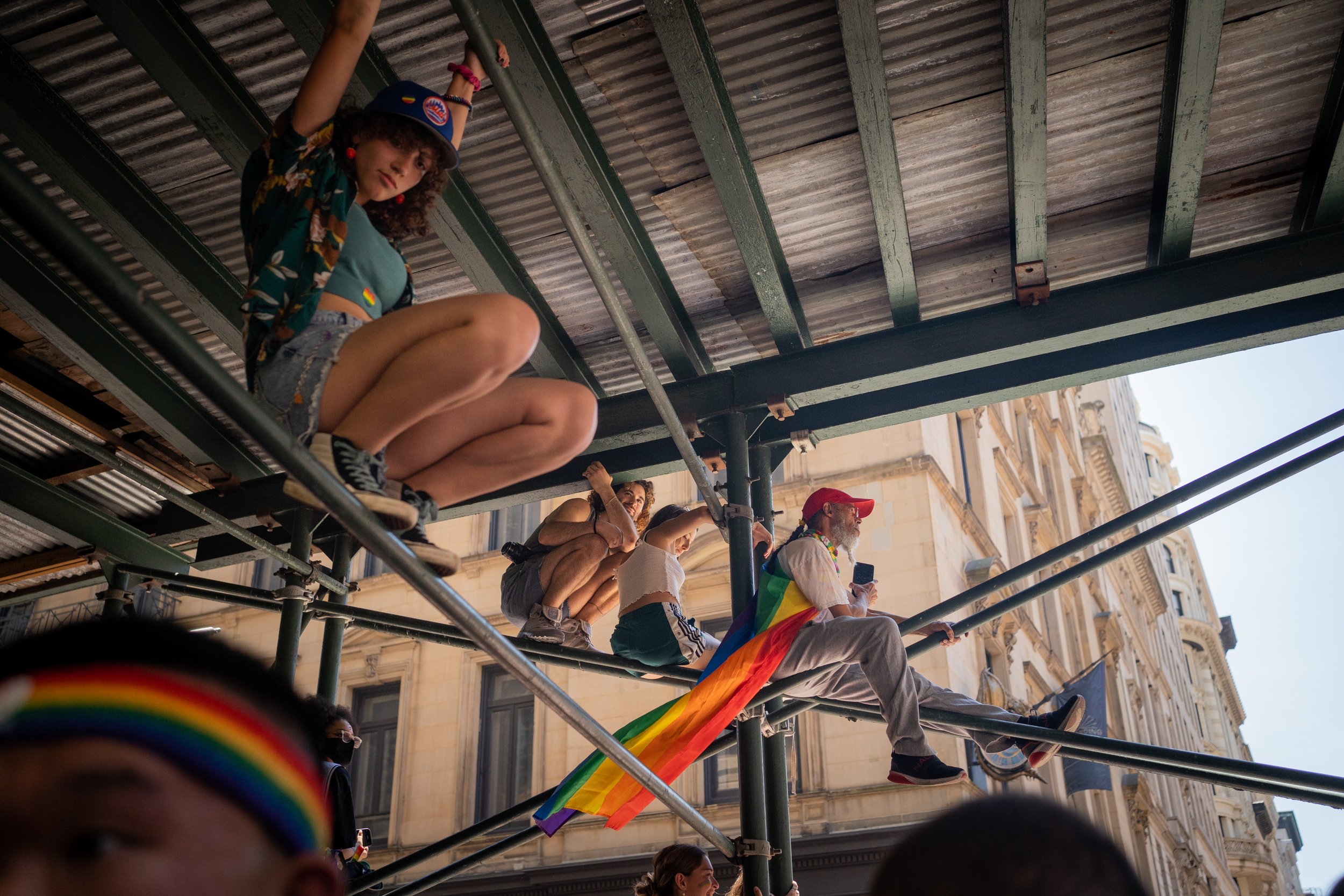Artist Feature: Paola Chapdelaine
Paola is a French photojournalist and documentary photographer who splits her time between Quebec and New York.
Studying political science and urban development, she is quickly drawn to street photography and develops a keen eye for composition observing human interactions in busy places. Through this medium, she sets out to explore topics of social and environmental justice.
Her documentary work ranges from the use of waste management as a development lever in Benin, to the life of an undocumented Afghan refugee in Canada, the cult of ancestors in the Voodoo religion, or the stories of binational couples separated by the pandemic. She has also been exploring how grassroots initiatives take action where public authorities are absent or lack political willingness, in particular following the endeavors of a satirical climate action group.
Aesthetically, she is inspired by figures of street photography such as Vivian Maier or Henry Cartier Bresson, in whose work she finds an incomparable sense of poetry, humor, and subtlety. She also draws some of her influences from Alex Webb or Harry Gruyaert’s striking color and composition work.
As a member of the press agency Hans Lucas, and having worked for the French Press Agency (AFP) and a variety of private clients, she is now an incoming student at the International Center of Photography in New York City (Documentary Practice & Visual Journalism).
Photos by Paola Chapdelaine
Q: Can you share something you've learned from creating this body of work that would resonate with our community?
PC: Creating a cohesive body of work as a street photographer may appear difficult, given that photographs are frequently made separately. Despite that, I see a unifying theme in both my street photography and documentary work: it taught me how to always maintain awareness about what unfolds around me. In that sense, the best quality of a photographer is to demonstrate strong observation skills, combined with a heightened sense of empathy.
Those qualities enabled me to engage with people, at once with discretion, respect, and curiosity. It means taking the time to learn about a community, understanding how people’s lived realities can drastically differ, and in this process, being offered their trust. Translating what I see into art is not always the first step. Having the patience to learn and challenge some of my own beliefs or frameworks, is. Listening without the intent to speak is a skill I am constantly trying to improve.
From this vantage point, you gain the ability to be more discrete and to document your environment with fewer alterations induced by your presence. Though in the hotly debated topic of “objectivity,” I don’t believe one’s presence as a photographer should always be erased. At the end of the day, stories are built from a personal point of view, and I’m comfortable letting in a dose of subjectivity that tells something about who I am.
Photos by Paola Chapdelaine
Q: Tell us about your work process! Do you plan your images ahead or are you more improvisational?
PC: As a street photographer, I’m 95% improvisational! That’s the magic in photography. I find immense satisfaction in being able to create a one-off frame that was never planned, yet still shows balanced composition, emotion, and a unique atmosphere… However, there are still a number of aesthetic principles that can guide your eye when photographing candids, which means you’re always prepared to “see.” Among those, you will have the commonly mentioned “rule of thirds”, perspectives including parallel and diagonal lines, secondary frames inside your image, repetitions of shapes, color combinations, light…. It can also be finding humor in daily situations, or layers of visual information that, when put together, create a narrative… So despite being improvisational, I’m still conscious of the signals that lead to a good photograph.
Besides, I admire great portraitists and photographers who truly “craft” their images such as Charlotte Abramow, Julia Fullerton-Batten, Kate Woodman, or (should I even mention) Annie Leibowitz… As I am learning more about studio lighting, their work inspires me to explore portraiture, which is also a highly creative exercise. It brings you closer to people and allows you to shape images that echo their journey. Portraiture is a also significant part of photojournalism, because stories that are told in the media often revolve around people… who, unsurprisingly, need to be photographed!
Ultimately, I find it useful to explore different techniques and merge them to come up with my own style and voice.
Photos by Paola Chapdelaine
Q: What types of expectations for women artists are most challenging to you today?
PC: Tough question! What I definitely find to be a challenge as a woman in the field is seeing a form of inherent confidence in male behavior, that is more rarely demonstrated by women. More often I observe self-limiting beliefs, varying degrees of imposter syndrome, and self-doubt in my female counterparts. Personally, I find the ability to question yourself - to an extent - to be a strong quality; but the professional field tends to view it otherwise. It’s something I still observe to this day in conversations I have with female friends, of whom some are photographers – women who are perfectly capable and talented, and will still doubt that they are doing (well) enough, or are even deserving of seeing their work valued.
Evolving in a field that is already highly competitive, this may make it harder for women to make their way up and establish their legitimacy. I have experienced and witnessed situations in which insiders try to belittle female peers, to assert their position; this can take the form of inappropriate ironic jokes or out loud remarks which can truly lower your self-esteem as a professional.
For this reason, I find that joining collectives and support groups to power through your practice, and to cheer each other on, is critical. People who find themselves less represented in a field, especially in the arts, can indeed lack the necessary network, resources, and support system. This is also why I’ve been working with the London-based start-up ArtULTRA, founded by the former director of the London Design Museum, Alice Black. Her goal is to champion emerging and underrepresented artists by providing them opportunities to work and sell their work.
Photo by Paola Chapdelaine
Q: What is your advice to young and aspiring photographers?
PC: First, don’t wait for people to hire you to start working on your craft. Create projects around topics that are dear to you, without any other frame than your own, with passion and diligence. This is the first step to gaining credibility among peers and professionals. When you demonstrate drive in creating an original and personal body of work, people will give you credit for it. Self-directed projects and continuous personal work are often what set promising photographers apart from the rest.
A few years ago, when I was going through a bit of a “creative desert,” I remember listening to a podcast called The Creative Pep Talk by Andy J. Pizza (his artist name). One of my favorite sections was entitled The Creative Side Quest. It explained that carrying out work for what you imagine to be “your virtual ideal client” allows you to learn the ropes without being accountable to anyone, giving you room to make mistakes, refine your craft, and build your portfolio.
And that’s really what I did. When I left my corporate job in 2020, I carried out several projects within the span of a couple of months and built story portfolios around them. That’s partly what allowed me to enter a press agency, and eventually to continue learning from more established peers. In doing so, I remember realizing that my first attempt at filming a short documentary on my own was rather poor, which prompted my next steps to improve those skills. In the end, it’s a long process and a numbers game; one absolutely has to be relentless about creating work - while also making it visible (“building in public”).
Specifically in photography, learning how to use the basics of your camera in manual mode, composition, editing (selecting and sequencing your images to build a narrative), and the fundamentals of light, are a good place to start. Remember, “photo-graphy” really means “writing (-graphy) with light (photo-)”! Post-processing is also important to grasp, but remember that just like make-up, a little goes a long way!
My second piece of advice is to never short-sell or censor yourself. I had (and still have) a chip on my shoulder from being an outsider and a “late-bloomer” in photography. I am entirely self-taught, but I believe that it has also given me the drive and stamina to continuously learn, grow, meet peers and understand my ecosystem – perhaps quicker than others. I found that working as if I had full legitimacy and being insatiable were traits that would undoubtedly get noticed, sooner or later. Nothing happens overnight, but consistency pays off.
I often remind myself of this tweaked saying: “Faith it until you make it.”
Photos by Paola Chapdelaine
Q: What does being a feminist mean to you?
PC: Being a feminist to me means challenging normative standards that lead to discrimination based on gender — while acknowledging the compounding effects of other factors (such as race, class, religion…). It’s being able to celebrate a woman’s personal choice to pursue a demanding career just as much as to achieve family and relationship goals. It’s to fight for women’s rights to determine their future. It’s to fight toxic masculinity and white supremacy, which lead to tragic acts of violence and oppression – and remain largely untackled (e.g. regulating uteruses more than assault rifles in the US). Finally, it’s being aware of your own privileges and using them to create opportunities for others.
Feminism is a multifaceted topic that isn’t just about women’s rights, but speaks to the way society is built as a whole.
Q: Do you have any upcoming events, exhibitions, or news you'd like to share?
I am delighted to be starting the Documentary Practice and Visual Journalism program at ICP (the International Center of Photography) in New York this year.
Besides, one of my favorite prints is on sale on artultra.net at the moment – run!
Follow @paola.chapdelaine and view more at paolachapdelaine.com













